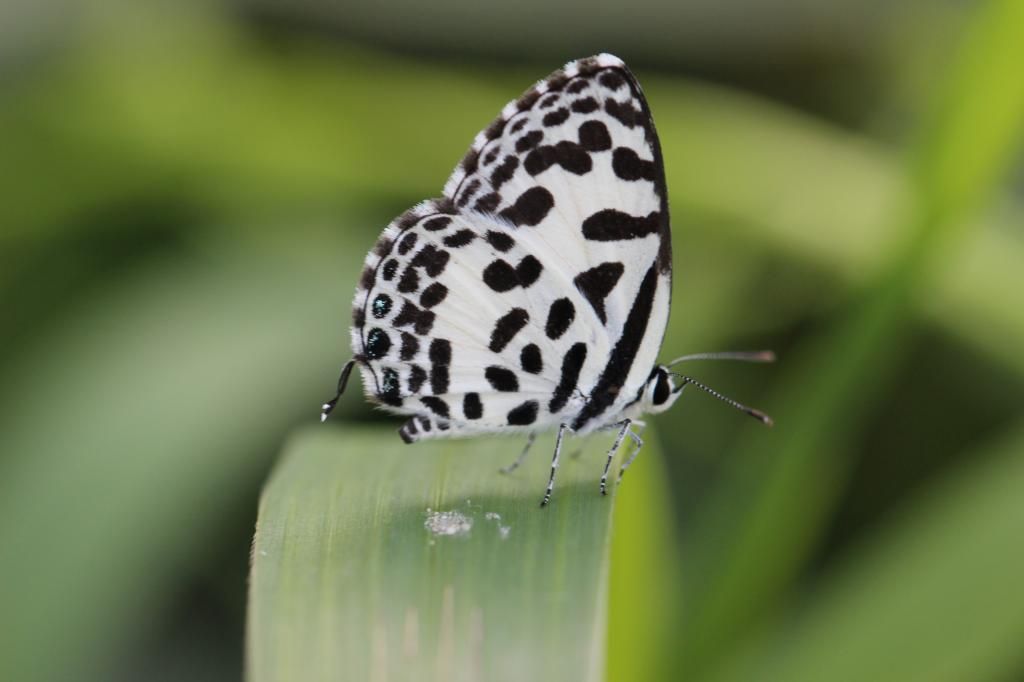|
|
Post by nomihoudai on Oct 31, 2015 9:29:29 GMT
And the ventral side, which definitely is the best in this species:  |
|
|
|
Post by Paul K on Oct 31, 2015 10:41:45 GMT
Lampides boeticus I just came across this lovely lycaenid in Bangkok. About 1km 2 area where it is occurring with 3 other species of Lycaenidae is mainly a wetland with high grass and pea family shrubs surrounded by concrete jungle except one side which is neighbouring city park ( different habitat ). The future of this colony doesn't look good as the development of the area already started and within most likely 2 years all the habitat together with all its live will disappear . it is unlikely that the colony will relocate to nearby city park as their food plant is missing there.
The interesting fact is that Lampides boeticus also occurs in Europe and England as well.
As many members of this forum specialize in British Lycaenidae I wonder what is the status of this species there as I have never seen any references or articles mentioned this species .
I haven't found any data in regards of subspecies of L.boeticus .

Paul
|
|
|
|
Post by nomihoudai on Oct 31, 2015 11:17:09 GMT
Don't worry about a Lampides boeticus, it is the biggest hemerophile there is. This species occurs anywhere in the old World from Europe to Australia. British collectors are fond of it because it is a migratory species that does not occur every year on their island. I myself are always disappointed when I find them in mixed lots from "remote" places.
There is no subspecies, they are highly migratory.
|
|
|
|
Post by nomad on Oct 31, 2015 11:26:09 GMT
Well the status of Lampides boeticus in England is that its a very rare immigrant to us. In the past few years quite a few have turned up on the Sussex and Kent coasts and it has bred but cannot survive our British winter, it prefers a warm climate. This species has caused one heck of a lot of controversy here by those wishing to collect it and those wishing to protect it so they can photograph it. Although this species is common in many areas, I saw it in the mountains of Corsica, it would be a real trophy for a Brit collector and an English example which has really hopped over from France would be worth quite a bit. However, I do not want to spoil your nice post by opening that can of worms in any detail. Here is a link to some posted images including my Corsican examples. See collector-secret.proboards.com/thread/606/lampides-boeticus-brittany-nw-france |
|
|
|
Post by cabintom on Oct 31, 2015 18:39:25 GMT
L. boeticus is everywhere here in eastern Congo. I really need to take the time to find some nice A1 examples though...
|
|
|
|
Post by Paul K on Nov 1, 2015 2:00:10 GMT
L. boeticus is everywhere here in eastern Congo. I really need to take the time to find some nice A1 examples though... Tom You should. It is not in Amaricas. I secured two A1 L. boeticus here in the middle of Bangkok. To be honest I only see it here. As I have drive through peninsular Thailand and collect on east and in Laos I have not met this species. Paul |
|
|
|
Post by africaone on Nov 1, 2015 9:09:26 GMT
it is quite frustating to put a picture of dead specimens (and pinned) as the beauty is 100 more times when alive. even nice picture doesn't reflect always the exact beauty of such jewel.  also frustating to choose one, many are so beautiful |
|
|
|
Post by wollastoni on Nov 1, 2015 10:42:34 GMT
Then put a live picture...

Castalius rosimon from PhiPhi Island, Thailand, Jan 2015. Photo Pequin. |
|
|
|
Post by nomihoudai on Nov 1, 2015 11:25:24 GMT
My first picture was from a live one,... it was even sitting on my finger. You should collect some eggs, I would be most grateful for Myrina silenus. I will find the necessary fig trees  Here is a Castalius rosimon from when I was in India. Common, but one of my favorites:  |
|
|
|
Post by nomihoudai on Nov 1, 2015 11:27:50 GMT
And a c#$@!y Lampides boeticus from India. You drive hundreds of miles in the South of India, drive up a mountain and wonder what species you find,...then the habitat turns European like and you find this. I am sorry, but I really hate that species   |
|
|
|
Post by nomihoudai on Nov 1, 2015 11:36:59 GMT
And a Pseudozizeeria maha from Bangalore, India. Very tiny, but beautiful light blue color. Very common in the Lal Bagh Botanical Gardens.  |
|
wolf
Aurelian
  
Posts: 132
Country: Norway
|
Post by wolf on Nov 1, 2015 13:47:19 GMT
Favonius quercus female  Plebejus idas  |
|
|
|
Post by nomihoudai on Nov 1, 2015 14:02:01 GMT
Here is some Satyrium, or Strymon that I photographed earlier this year in West Texas. I was disappointed by the lack of Lycaenidae, but I guess a small body is not good in a dry environment.  |
|
mantisboy
Junior Aurelian
 
Posts: 81
Country: U.S.A.
|
Post by mantisboy on Nov 1, 2015 14:03:42 GMT
Here is a live photo of Lycaena phlaeas: Attachments:
|
|
mantisboy
Junior Aurelian
 
Posts: 81
Country: U.S.A.
|
Post by mantisboy on Nov 1, 2015 14:10:28 GMT
A picture of Lycaeides melissa samuelis, this subspecies (known as the Karner Blue) is endemic to sand barrens in the Northeast, and Upper Midwest. Despite being protected, it can be quite common in the right habitat. Attachments:
|
|



